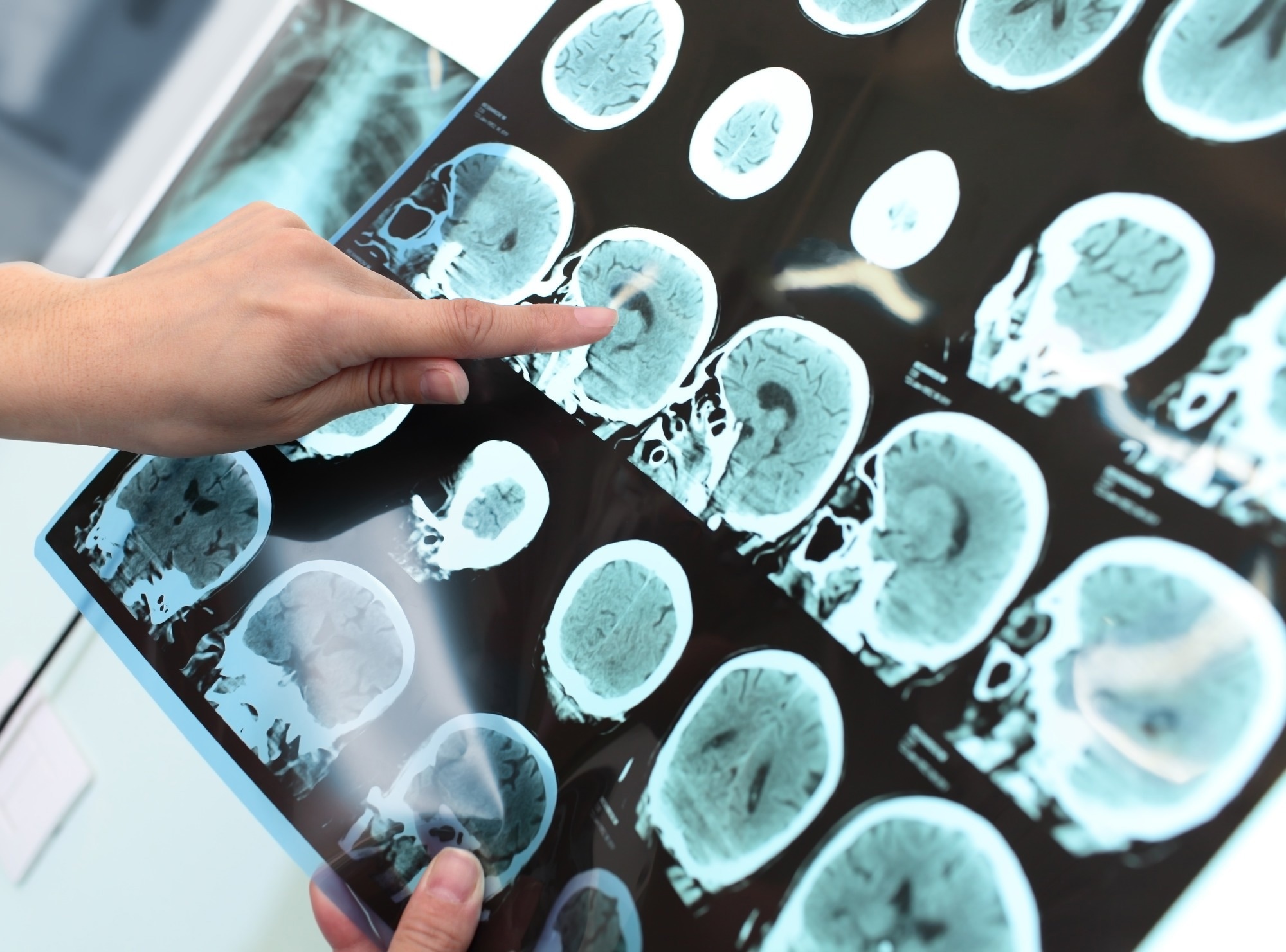In a recent article published in Nature Medicine, researchers designed a biomarker study that tested whether astrocyte reactivity (Ast+) modulated the association of amyloid-β (Aβ) with tau phosphorylation in preclinical Alzheimer's disease (AD).
 Study: Astrocyte reactivity influences amyloid-β effects on tau pathology in preclinical Alzheimer’s disease. Image Credit: sfam_photo/Shutterstock.com
Study: Astrocyte reactivity influences amyloid-β effects on tau pathology in preclinical Alzheimer’s disease. Image Credit: sfam_photo/Shutterstock.com
Background
Accumulation of Aβ in the human brain precedes tau pathology in some individuals. Postmortem studies have shown that astrocyte reactivity is another biological process that triggers the hazardous effects of Aβ during the early stages of AD (preclinical AD).
Therefore, its mitigation could attenuate tau pathology in individuals with Aβ-positive (Aβ+) cognitively unimpaired (CU). In addition, glial fibrillary acidic protein (GFAP)-positive astrocytes can internalize tau and facilitate its propagation.
This experimental evidence supports a close link between Aβ, astrocyte reactivity, and tau pathology in preclinical AD.
About the study
In the present study, researchers classified all 1,016 CU study participants as Ast− or Ast+ based on their plasma GFAP levels. They recruited individuals in all three study cohorts from two research-based and one population-based study.
The Pittsburgh cohort comprised research volunteers from the four studies whose cognitive status and plasma biomarker data were available.
The TRIAD cohort included participants from Montreal, Canada, who also provided extensive clinical and cognitive assessment reports.
The MYHAT was a population-based study cohort comprising participants from southwestern Pennsylvania in the United States of America (USA), all aged 65+ years. They all completed neuropsychological testing, and CU individuals had clinical dementia rating (CDR) = 0.
The team used the single-molecule array (Simoa) method to measure plasma biomarker levels (except plasma-tau217) of all Pittsburgh and TRIAD cohorts of participants. Likewise, they quantified plasma Aβ42, Aβ40, GFAP, and neurofilament light using the neurology 4-plex E-commercial assays.
Data on Aβ–PET was unavailable for some participants from MYHAT and Pittsburgh cohorts. In such cases, the team used plasma Aβ42/40 to determine Aβ positivity based on the expected 30% Aβ positivity in CU individuals.
Furthermore, the team used plasma glial fibrillary acidic protein (GFAP) concentrations of the 15% youngest Aβ-negative individuals [+2 Standard Deviation (SD)] to generate cutoffs for astrocyte reactivity of younger individuals devoid of AD-related pathology.
In a subset of the TRIAD cohort, they used a mesoscale discovery assay to measure cerebrospinal fluid (CSF) sTREM2, a microglial marker reflecting an age-dependent increase in microglial senescence.
The researchers also quantified positron emission tomography (PET) scans and magnetic resonance imaging (MRI) biomarkers for the TRIAD cohort and 86 and 64 individuals from the MYHAT and Pittsburgh cohorts, respectively.
For Aβ–PET and tau–PET quantification in the TRIAD cohort, they used (18F) AZD4694 and (18F) MK-6240 tracers, which helped compute the standardized uptake value ratio (SUVR). They also estimated Aβ–PET neocortical SUVR from a cortical composite, where values >1.55 indicated Aβ-positivity.
The MYHAT and Pittsburgh cohorts quantified Aβ–PET using (11C) PiB PET tracer to compute a global SUVR index by volume-weighted averaging of all nine composite cortical regions.
Results and conclusion
The authors found biomarkers-based evidence that during preclinical AD, increased astrocyte reactivity was associated with Aβ accumulation during early tau phosphorylation in CU individuals.
Thus, they advocated using astrocyte reactivity biomarkers in biomarker modeling and biological definitions. Additionally, they observed that Aβ levels of CU Aβ+/Ast− and Aβ+/Ast+ individuals in all three cohorts were similar.
However, plasma p-tau181 levels surged as a function of Aβ only in CU Ast+ individuals.
More importantly, the study results suggested that aberrant astrocyte reactivity is an early upstream event that precedes tau pathology in the biomarker models of AD progression, thus, providing a better classification for preclinical AD at an early stage.
Yet, future studies should confirm the exact time-dependent order of appearance of each biomarker aberration, Aβ, tau, and GFAP. These studies might uncover other factors correlated to early astrocyte reactivity in preclinical AD.
In clinical trials, researchers should select Aβ+/Ast+ CU individuals without increased p-tau abnormality and test the effect of various interventions in these people to stop AD progression.
Drugs targeting Aβ and astrocyte reactivity mediators might also help prevent early tau pathology among patients with preclinical AD.
Furthermore, the study results suggested that astrocyte reactivity impacted the correlation of Aβ with tau more in men than women. Thus, anti-Aβ therapies more effectively modified Aβ–the astrocyte–tau pathway in men than women.
Overall, the study findings suggested that early detection of astrocyte reactivity aberrations using biomarkers could predict whether CU Aβ+ individuals will progress to full-fledged clinical AD.
 Resting heart rate as a cardiorespiratory health biomarker
Resting heart rate as a cardiorespiratory health biomarker